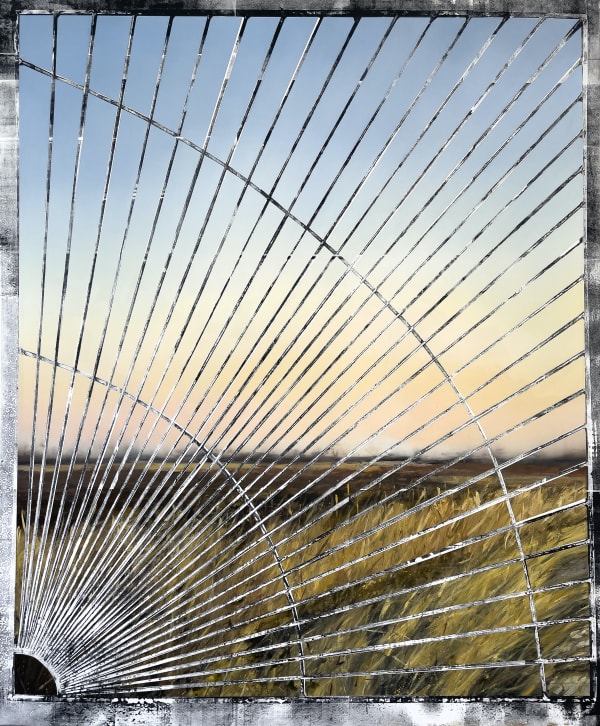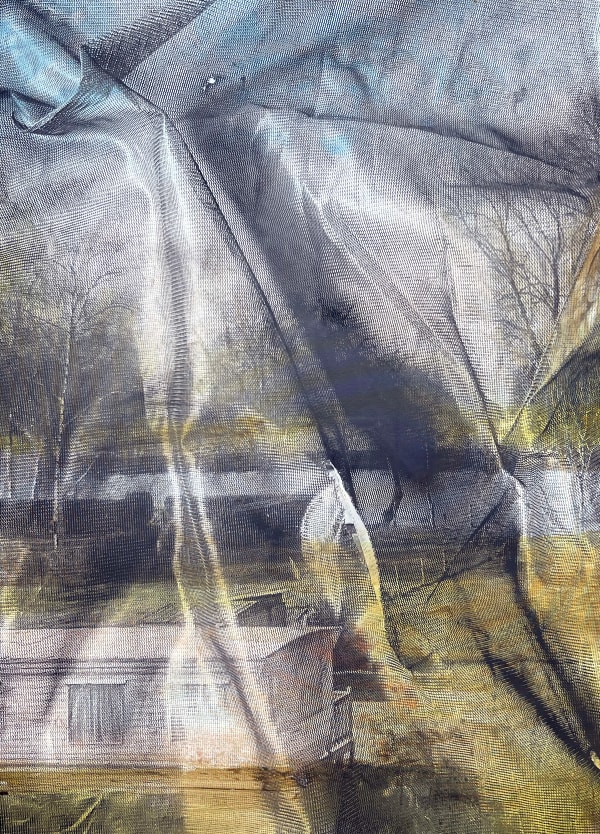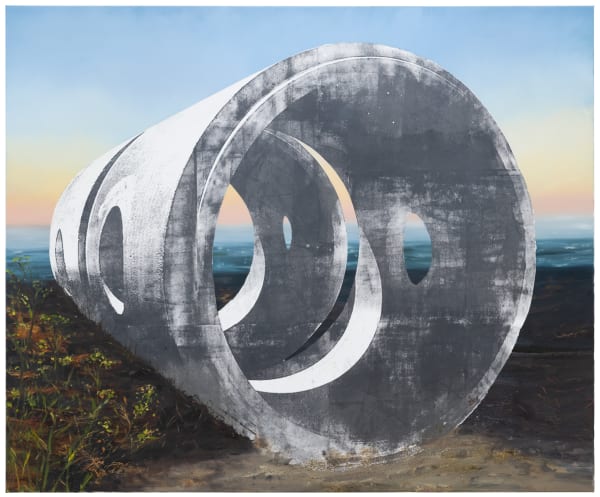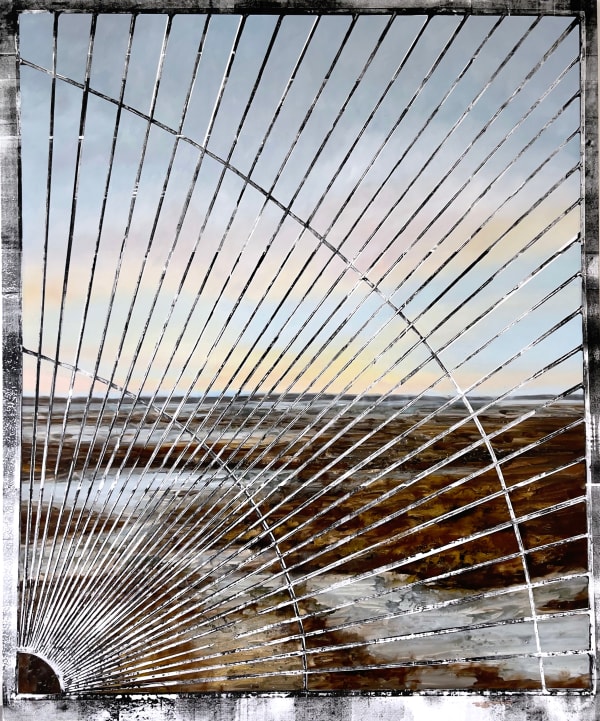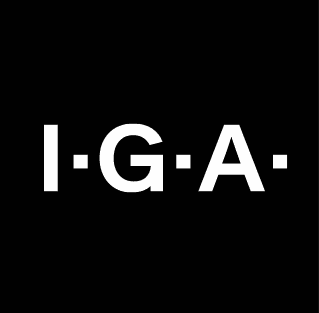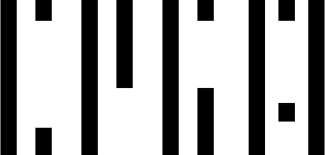Eva Nielsen
Limestone
March 22 - May 25, 2024
Opening: Thursday, March 21, 6 - 8 pm
Zahnradstrasse 21, Zurich
Walk-through with art historian and cultural researcher , Heike Munder during the opening.
Galerie Peter Kilchmann is pleased to present "Limestone", its first solo exhibition with French-Danish artist Eva Nielsen (b. 1983 in Les Lilas, France. Lives and works in Paris, France). On view are nineteen paintings produced during a 2023 BMW artist residency in the Camargue in France featuring landscapes and architectural structures that highlight the importance of these elements in her creative approach. The works give an insight into the materials and techniques that the artist has been recently exploring. During this residency, Nielsen also developed metal structures veiled in organza fabric in which some of the works hang from. The exhibition also features two new wallpapers specially developed for the gallery space in Zurich.
Nielsen is known for her hybrid works that combine photography and painting. The ‘photo–painter–artist’ takes photographs of random places as well as draws from family archives. For the works in the exhibition, she used latex, leather, silk, oil, screen-print and silkscreen, which reveal the complex and unexpected dimension to her unique compositions. The works contain a multitude of successive and immersive layers and fictional landscapes. Her layered works often create a tension as well as a certain ambiguity about their production processes. This ambiguity, according to Nielsen is the primary point of entrance to the work: it intrigues and makes one eager to try to comprehend what the work is and how it was made. Any viewer who immerses in Nielsen's landscape experiences distinct colors, light, sounds and scents, which immediately weave a complex network of memories.
The Karstseries (170 x 120 cm) is the first in which the brush or paint does not have an impact. Karst is a geomorphological structure resulting from the hydro-chemical and hydraulic erosion of soluble rocks. The works were made with scraps of leather from the Roux tannery, with which Nielsen is collaborating as part of her residency at LVMH in 2021. The artist enthusiastically assembled the cuts made by this particular tannery. The random shapes, sewn together by the artisans (from Mains d’oeuvre), create puzzle-like landscapes that are reminiscent of the way rocks clump together. On the sturdy leather Nielsen deploys printed organza sails which act like an illusion making houses appear as if they were on the edge of a cliff. Silk and leather are materials with almost contradictory properties and the cutouts underline this contrast. Something seems both solid, immutable (leather) and fragile, unexpected, elusive (silk).
In the artist’s landscapes, the concept of cropping and cutting out the horizon and redefining the environment are structuring elements. Their motifs are constant elements and serve as catalysts to create a contradiction, a tension between the printed trace and the pictorial gesture. The direct experience of the horizon is rare, made even more laborious in urban areas where obstacles to the view, made of steel frames and grilles, sabotage the experience. This is particularly apparent in Doline (Salicorne) and Doline (Alluvions) (230 x 190 cm each). During her stay in Arles, the artist was captivated by these ornate, vernacular grids. These radial, net-like motifs serve as a filter between the landscape and the viewer, blocked or fragmenting their vision. The Camargue provides a horizontal territory and the disruptive, geometric property of these grids allowed the artist to apply the format of the canvas like a window. It creates a tangible frontier between the corporeality of the observer and the reality of the landscape.
Ascien (Terril) (200 x 250 cm, ascian: one that has no shadow. specifically: an inhabitant of the torrid zone where the sun is vertical at noon for a few days every year.), is a utopian vision which is part of Nielsen's research exhibited among others at the Lyon Biennale in 2022. Two fragmentary structures inspired by architecture, indicated by their rocky color, seem to float on a panoramic view at a time at which we do not know if it marks the beginning or the end of the day. These tunnels or underground water conduits that are in the foreground and the black and white screen prints are applied to the bare canvas in both Doline (Salicorne) and Doline (Alluvion). The paint is placed on the surface, between masking tapes covering the screen-printed elements. In successive layers, the work is only revealed in its ultimate proposition once the ribbons are removed, usually in a radical motion. These arrangements act by creating an appearance, almost like a mirage, both for the painter, who only discovers the final result at the end, and the viewer is potentially disturbed by these retinal expectations.
According to Nielsen, “talking about houses, architecture, landscapes is talking about humans. Moreover, this is only talking about human beings as we are linked to the ecosystem that we interpret, shape, destroy, fantasize about. Our worlds are inhabited by our desires. Habitat, shelter, and construction are linked to this projection”.
The Lucite series consecrates marsh cabins as spaces of passage, border zones, limbos between land and sea. Shifting territories, whose soaked or cracked soils offer unprecedented effects of textures and reliefs, they inspire the artist to come and deploy the motif of a crumpled mosquito net screen-printed on the canvas or paper depending. This gauze is an additional frame that further blurs the gaze and ultimately embodies the ambiguity of these uncertain and enigmatic landscapes.
To Nielsen, the landscape is never neutral. Space, sedimented, is made up of multiple strata; they are all at the same time and simultaneously, geological, political, and social. They are superimposed on the landscape at the same time as they make up its complexity. Accordingly, our experience of the landscape is never neutral. For Phosphène II (80 x 60 cm) and Insula I (73 x 55 cm) Nielsen borrows female silhouettes from the family photographic archives. Ink and acrylic are first applied on the canvas. The screen printing follows in a second step to screen the image and creates a grid that prevents the gaze and the gaps between which to observe. Then the printed silk organza is deposited as a transparent veil, a film, a plasma, or an organic hologram. The process is the same for Diluvium II and Phosphène I, in which cabins in the background were photographed in the Camargue on the edges of the marshes.
The use of silk makes this admitted ambiguity of the images much more concrete. The lamination mirrors them and offers a unique visual experience, everything appears to be moving and transitioning depending on the point of view adopted by the viewer. Silk is also a distant relative of silkscreen, with which it has a historical link since it was the material originally used to transfer images. Between appearance and disappearance, the experience of this slow fragmented perception is sensitive, impactful, and almost spiritual.
In this regard, Insolare I and Insolare II (180 x 130 cm each) offer a more disruptive experience. The oil is deposited in gradients, according to the classic sfumato technique. Printed latex is stretched over the background. The work appears like skin heated by the sun, incandescent. The viewer almost feels the warmth of the strange but seductive territories of the Camargue radiating. The very title of this series is rooted in the technique of the underlying photography.
Nielsen, as an alchemist accumulates views, superimposes them, adds them, lets them contradict each other, and lets them develop, to finally restore something that echoes the sublime. According to Burke writes about a "terror delicious”: it is the intense feeling of being alive in a landscape that is also alive.
The artist translates the experience of life into plural visual propositions. She reveals her obsession with a fragmentary vision and a fragmented, insoluble, imperfect, captivating relationship with the world we experience. To the viewer, the journey is as physical as it is conceptual and their relationship to Nielsen’s work seems to be in its depth and counter-form, to be of an existentialist nature.
Eva Nielsen’s work has been exhibited in the following public institutions: Mac/Val, France; LACE, Los Angeles; Plataforma Revolver, Portugal; BNKR, Munich; Perm Museum, Russia; Kunsthal Charlottenborg, Denmark and Palais Pisztory, Bratislava among others. In 2009, she was awarded the Prix des Amis des Beaux-Arts Prize and in 2014 the Art Collector Prize (both in France). Her work is featured in numerous public and private collections including: the Mac/Val, the Musée de Rochechouart, the Musée des Beaux-arts de Paris, The Fiminco Fondation, The Société Générale Collection, the FMAC, the FRAC Auvergne, the Fondation Schneider, the Emerige Collection (all in France), as well as in the MOCA, Los Angeles, USA and the Fondation Thalie, Belgium. In 2021, Eva Nielsen was the laureate of the LVMH Métiers d'Arts prize. In 2022, she was nominated for the 23rd Fondation Pernod Ricard Prize "Horizones" and participated in the 16th Lyon Biennale of Contemporary Art: Manifesto of Fragility in Lyon, France. In 2023, she is the laureate with Marianne Derrien of the BMW Art Makers Prize with the Insolare Project, exhibited in Les Rencontres d’Arles in 2023.
 Eva Nielsen, Doline (Salicorne), 2023
Eva Nielsen, Doline (Salicorne), 2023 Eva Nielsen, Insula I, 2023
Eva Nielsen, Insula I, 2023 Eva Nielsen, Lucite (They I), 2023
Eva Nielsen, Lucite (They I), 2023 Eva Nielsen, Lucite (They II), 2023
Eva Nielsen, Lucite (They II), 2023 Eva Nielsen, Lucite (They III), 2023
Eva Nielsen, Lucite (They III), 2023 Eva Nielsen, Polhodie V, 2024
Eva Nielsen, Polhodie V, 2024 Eva Nielsen, Doline (Alluvions), 2023
Eva Nielsen, Doline (Alluvions), 2023 Eva Nielsen, Insolare I, 2023
Eva Nielsen, Insolare I, 2023 Eva Nielsen, Insolare II, 2023
Eva Nielsen, Insolare II, 2023
